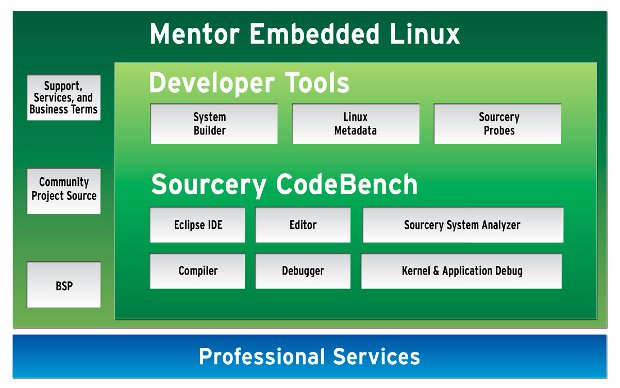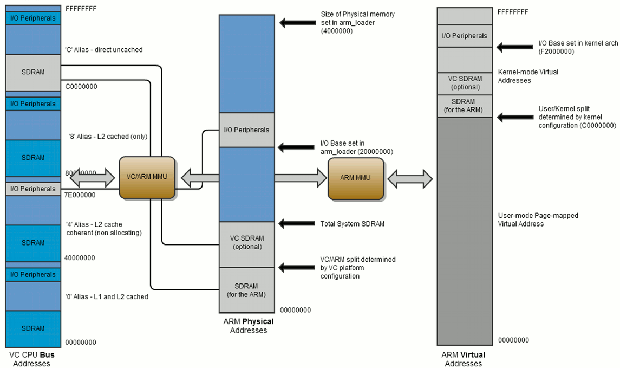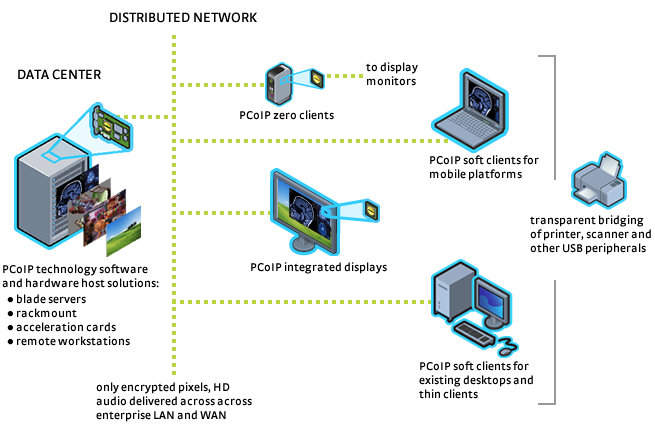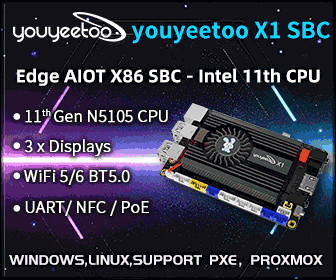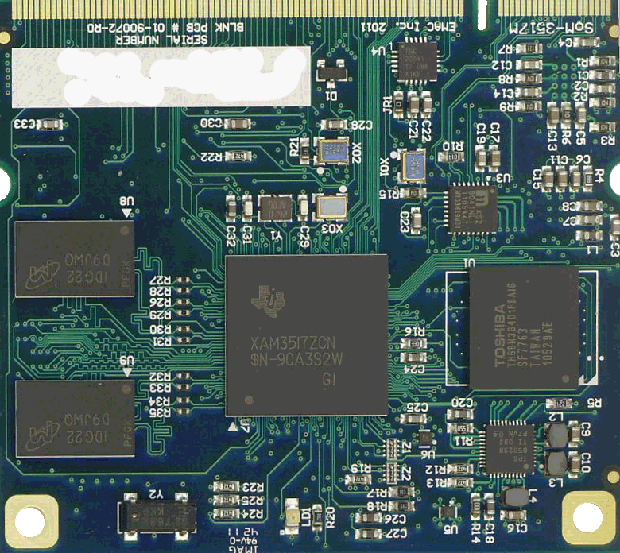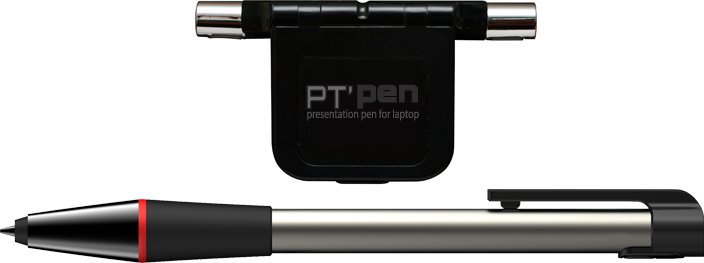Mentor Embedded has recently released free Linux Kits for the BeagleBoard (TI OMAP3) and Pandaboard (TI OMAP4) low cost development boards. Both Mentor Embedded Linux (MEL) kits include: Mentor Embedded Linux Lite, a pre-built Yocto-based distribution, including libraries and headers A Linux Board Support Package (BSP) for your reference board A pre-built filesystem for the target Sourcery CodeBench Lite for application development Installation / Application Development Guides Since Mentor Embedded provides the “Lite” version of their kits, some of the tools mentioned in the diagram above (e.g. Codebench IDE, System Analyzer…) are not available in the free kits. After free registration, you can download the 2 kits on Mentor Embedded website: PandaBoard Linux Kit BeagleBoard Linux Kit and you’ll have access to 3 downloads: Mentor Embedded Linux Kit Installer Quick Start guides Source files which are optional. You can get support for the kits via Mentor Embedded Linux mailing list. […]
Raspberry Pi Releases BCM2835 Datasheet for ARM Peripherals
If you have been following Raspberry Pi project, you may have noticed the dearth of documentation related to Broadcom processors. For BCM2835 (The processor used in Raspberry Pi board), Broadcom only has one laconic webpage. But the Raspberry Pi’s “super-team” has managed to get a (partial) datasheet for the SoC showing the details of BCM2835 ARM peripherals which is all that we may need. This would only be useful for people playing around with the Linux (and u-boot) drivers. The document includes details about the processor’s memory map as shown below. It also contains details (registers, implementation details, etc..) about the following ARM peripherals: Timers Interrupt controller GPIO USB PCM / I2S DMA controller I2C master I2C / SPI slave SPI0, SPI1, SPI2 PWM UART0, UART1 You can download BCM2835 datasheet to get the complete documentation. The Raspberry Pi foundation also announced that the boards will be ready on February […]
Archos 80/101 G9 Firmware Version 3.2.80 Released
Archos has just released a new firmware for Archos 80 G9 / 101 G9 and A70B. Here’s the ChangeLog: Version 3.2.80 – February 3rd, 2012 Video: improve audio/video synchronization on HDMI Video: improve playback of some FLV files File manager: add ability to copy files larger than 4GB Keyboard: better Arabic virtual keyboard layout Internationalization: translations improvements for Arabic and Hebrew Flash on A70B: fix flash video not displayed on some web sites Video on A70B: improve 720p playback support on LCD and TV out Hard drive based products: avoid suspend/resume issues happening sometimes The update should be done automatically OTA, but alternatively the firmware can be downloaded at http://update.archos.com/9/gen9/gen9_3.2.80/firmware_archos_it4.aos
Opersys Releases Their Android and Linux Training Materials
Opersys has decided to release their courseware under a Creative Common license (CC-BY-SA 3.0). The materials are available in PDF and ODP format for the following classes: Embedded Android – 5-days hands-on class covering Android (AOSP) for Embedded Systems (not only smartphones and tablets) Presentation Slides: PDF | ODP Exercises: PDF | ODT Android App Development – 5-day class to learn how to build your own Android Apps using Google’s SDK Presentation Slides: PDF | Tarball with Beamer files Exercises: PDF | ODT Embedded Linux– 4-days hands-On class learning about cross development, the kernel, the rootFS and the bootloader Presentation Slides: PDF | ODP Exercises: PDF | ODT Linux Device Drivers– 3-days hands-on class about modules, locking, interrupts and memory management, as well as char, block, network and USB drivers training. Presentation Slides:PDF | ODP Exercises: PDF | ODT You can freely use this material to learn more about Android and […]
Adding Google Plus to Light Social Plugin for WordPress
I’ve just switched to Light Social plugin because I have problems with other plugins such as Digg Digg and Sexy Bookmarks. The Light Social plugin is not updated anymore, so Google Buzz button is still there, but there is no Google+ button. In order to replace Google Buzz button by Google+ button, you simply need to modify code_google_buzz function in wp-content/plugins/light-social/lightsocial.php as follows:
|
1 2 3 4 5 6 7 8 9 10 11 12 13 14 |
function code_google_buzz($title, $link, $img_prefix) { return ' <div class="lightsocial_element"></div> <script type="text/javascript">// <![CDATA[ (function() { var po = document.createElement(\'script\'); po.type = \'text/javascript\'; po.async = true; po.src = \'https://apis.google.com/js/plusone.js\'; var s = document.getElementsByTagName(\'script\')[0]; s.parentNode.insertBefore(po, s); })(); // ]]></script> '; } |
‘; }
Run Windows 7 (or Any OS) on Android Tablets with PCoIP Protocol
Teradici has developed PCoIP (PC-over-IP) protocol, a technology that allows to run a full desktop remotely over the network on thin clients, desktops, integrated displays, laptops and even Android tablets. The PCoIP protocol compresses, encrypts and encodes the entire computing experience at the data center and transmits it ‘pixels only’ across any standard IP network to stateless PCoIP zero clients. The PCoIP protocol is implemented in silicon for hardware accelerated performance and in software in VMware View. It supports high resolution, full frame rate 3D graphics and HD media, multiple large displays, full USB peripheral connectivity, and high definition audio all via LAN or WAN networks. A typical network made of PCoIP clients is shown below. Teradici emphasizes three key features of PCoIP technology: PCoIP technology uses host rendering Most other remote desktop technologies uses client rendering which may not be optimal and requires somewhat powerful clients. PCoIP uses host […]
EMAC SOM-3517M: System-on-Module based on TI AM3517
Emac announced the SoM-3517M, a System-on-Module (SoM) based on TI AM3517 Cortex-A8 processor clocked at 600 MHz. This SOM has an Ethernet PHY included along with 4 serial ports. It supports up to 512MB of external DDR2 SDRAM, 1GB of NAND Flash, 2GB of eMMC Flash. Here are SOM-3517M specifications: CPU: TI ARM Cortex-A8 600 MHZ Fanless processor System Memory: Up to 512 MB of DDR2 SDRAM (default: 256 MB) Storage: Up to 1 GB of NAND Flash (default: 256 MB) UP to 4 GB of eMMC Flash (default: 2 GB) LCD Interface – 16-bit DSTN/TFT Graphics: 2D/3D Accelerated Video w/ Resistive Touch Connectivity: 10/100 BaseT Ethernet I/O interfaces: 4 Serial Ports 2 Full Speed USB 1.1/2.0 Host ports 1 Full Speed USB OTG port 2 I2C and 2 SPI ports I2S Audio port High-End CAN Controller CAN 2.0B Controller Timer/Counters and Pulse Width Modulation (PWM) ports 1 Channel, 12-bit […]
Penandfree PT- Pen Transforms Your Laptop into A Tablet
Penandfree has unveiled the PT-pen (Presentation pen) at the 2012 ISE exhibition. The company claims this pen can transform ordinary laptops or netbooks into touch-screen tablets, replacing the need for both a mouse and keyboard. PT-Pen can be used for capturing handwritten notes, digital signatures and all sorts of creative sketches. MINT Interactive software is included with the PT-pen and provides access to a full color pallet, a variety of line thicknesses, a virtual keyboard and a handwriting recognition mode. Penandfree explains that PT-pen allows navigation in web browsers and can be used with office software such as Microsoft Excel and Powerpoint as it conforms with Microsoft tablet and standard HID specifications. Mint Interactive Software can be download for Windows XP/Visata/&, MacOS and Linux. For Android Tablet and/or iPad users, Penandfree unveiled the “Legato Smart-Pen”. The PT-pen digitally “inks” a laptop’s LCD using ultrasonic technology. A magnetized receiver sits at […]


